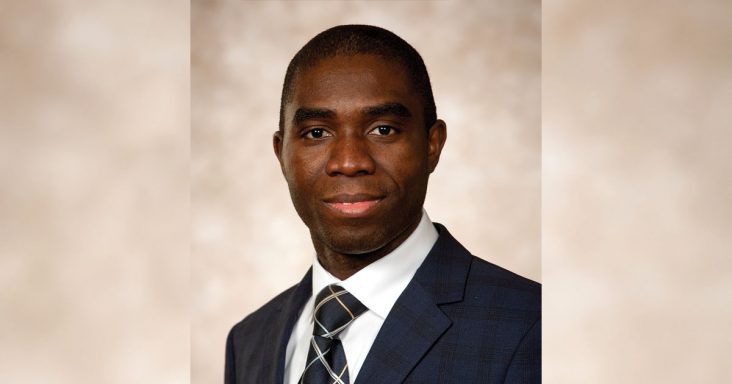Bioengineer hopes to create ‘loops’ in the food chain
by June 9, 2021 8:49 am 672 views

As the world’s population continues to rise, the science of growing food more efficiently will become critical. Arkansas’ top economic sector is agriculture, and at least one new scientist in the Natural State is taking this challenge head-on.
Dr. Ebenezer Miezah Kwofie believes food production and consumption are linear, with waste products leaking out all along the line. He’d like to turn that line into a loop to create a more sustainable food system worldwide.
Kwofie has joined the University of Arkansas College of Engineering with appointments in the departments of biological and agricultural engineering and chemical engineering. He will also have a research appointment in the department of food science in the Dale Bumpers College of Agricultural, Food and Life Sciences. The departments of biological and agricultural engineering and food science are also part of the University of Arkansas System Division of Agriculture.
“Dr. Kowfie’s focus on sustainable food systems will add valuable capacity to the team on sustainable foods and nutrition to address global food challenges,” said Lalit Verma, biological and agricultural engineering department head. “Dr. Jeyam Subbiah and I are working to build a core of excellence in food engineering in the Division of Agriculture and the University of Arkansas.”
Subbiah said food sustainability research includes many factors.
“Our departments’ collaboration on integrated food sustainability requires analysis of profitability, food safety, social impacts and other elements,” said Subbiah, head of the food science department for the Division of Agriculture and Bumpers College. “Our scientists and engineers have to determine how to quantify those metrics, and Dr. Kwofie brings an exciting stock of skills and experience to the task.”
Before coming to the UA, Kwofie worked on food sustainability projects in Africa, Latin America and Asia. He led projects to develop programs and models to measure food sustainability in local food systems in those areas.
“I know what we mean when we say our existing food system is not working,” Kwofie said. “I know it from the field, not just the lab. I know what it means not to connect the dots.”
Kwofie earned a bachelor’s degree in chemical engineering at Kwame Nkrumah University of Science and Technology in his native Ghana. He earned a master’s degree in industrial engineering at the University of Boras, Sweden, and a doctorate in bioresource engineering at McGill University in Canada.
During postdoctoral appointments at McGill, he conducted his work in metrics and technologies in Zambia, Ethiopia, Bolivia and Laos. In a separate project during the same postdoc, he worked modeling sustainable industrial processing in the Dry Corridors of Honduras.
Kwofie said existing food systems are linear. When rice is harvested, for example, tons of straw are left in the fields. About a third of the grain’s mass — rice hulls and bran — is removed during the milling of white rice, and often most are wasted. It’s a straight line, Kwofie said, that begins with production on the farm and passes through processing, distribution and consumption. This system wastes many food byproducts by the end of the line. Other crops, like legumes such as peas and soybeans, are often grown for plant-based protein foods, Kwofie said.
“But these foods contain a lot more starch than protein,” he said. “Although starch has huge potential for non-food applications, it is considered a byproduct by the protein industries and is treated as such.”
His answer is to turn the line into a circle. Kwofie said finding uses for those wasted byproducts is key to circularity. The byproducts can be recycled back into the system, used as soil amendments for the farms, burned to produce energy or any number of other uses.
“Examining the technical, economic and environmental trade-offs of these utilization pathways provides more opportunities and options for stakeholders to make a more sustainable choice,” Kwofie said.
His research explores the connectivity of the elements that make up food systems. He begins by examining consumer needs and desires. He believes consumers could make more informed food choices if they had more information about nutritional values and environmental costs associated with different foods.
“Consumers drive the farms in that the farmers know they must grow crops they can sell,” he said. “This information is available for industries. I want to look at ways that same information can be made easily available to consumers.”
Kwofie plans to promote sustainable healthy food choices among consumers through nudging and enabling consumers to see the impact of their choices on their health and the environment. His lab is developing a sustainable healthy choice web platform that allows consumers to know the nutrition quality, contribution to healthy living, and the environmental impacts of their food choice before making their purchase. He said the platform would be available in dining areas and food courts and on UA websites for ready access.
Understanding consumer demands can help shape food production, processing and distribution systems to build more sustainable food systems to feed a hungry world, Kwofie said.
